Print Dryer
This is a design for a print dryer based on principles which I and others have used for decades and have found to work well. The main dynamic is a simple one: damp prints are sandwiched between layers of material including corrugated cardboard and then air is made to flow through the corrugations in the cardboard which removes the moisture from the stack, drying and (since paper shrinks as it dries) stretching the prints.
It is a common practice to dry and flatten prints by putting damp prints between layers of flat absorbent material such as blotters or drywall and maybe exchanging the absorbent material from the stack with dry material from time to time until the prints are dry. This may work with prints that are small, or not very numerous but is an inefficient way to get prints completely dry since you get a "half-life" situation where the moisture is reduced but not removed. (By "completely dry" I mean a situation where the moisture content of the print is the same as the ambient air surrounding it, so the print is physically stable and not prone to buckle or wrinkle.) The last bit of drying is the most important part, and if prints are removed from the stack before being thoroughly dry the edges will dry (and shrink) ahead of the middle, and the prints will buckle. They will need to be dampened and re-flattened.
The dryer shown below has a working (print size) capacity of 32 by 45 inches. (81.2 cm by 114.3 cm)
The overall size of the dryer is 32 3/4 in. wide, 48 in. long, 13 in. high without fan assembly and 24 1/2 in. high with fan assembly.
Assuming the back (48 in. long) side is next to a wall, you need either 5 in. of space behind it or a ledge above it for stowing the ratchet buckles on the straps when they are not in use. That and the minimum 24 inches of space it requires to sit on would require a tabletop depth of 29 inches, and you would have 9 inches of stack overhang. This could be remedied by providing a 38 in. wide (by 48 in. long) piece of plywood for it to sit on that would augment the depth of the table or countertop.
Cut-list & more info. Lo-Tech version
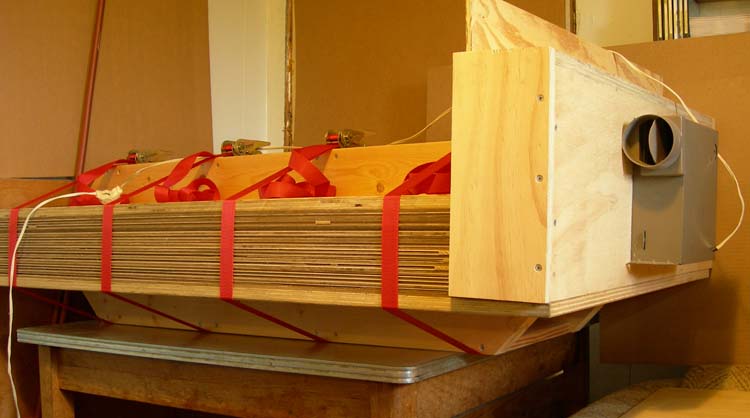 |
Dryer, loaded and operating. |
|
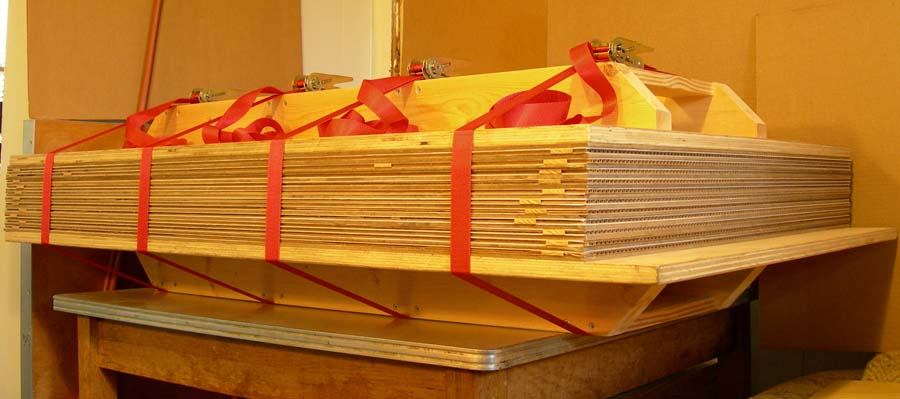 |
Stack, without fan assembly | |
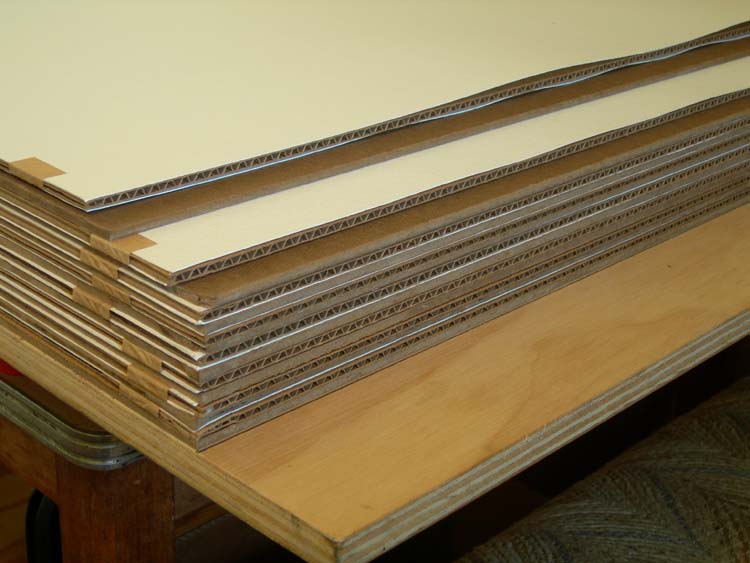 |
Stack, showing arrangement of layers. | 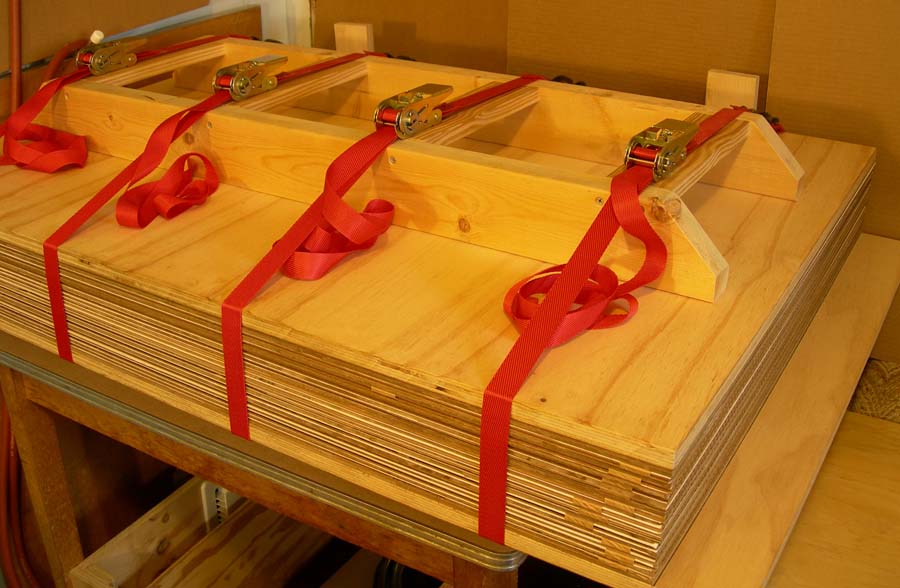 |
Top view of stack | ||
 |
Top stack cover |  |
Backside of stack | ||
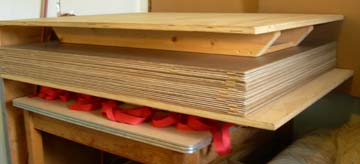 |
Dryer top can be flipped to serve as a table top when not in use. |